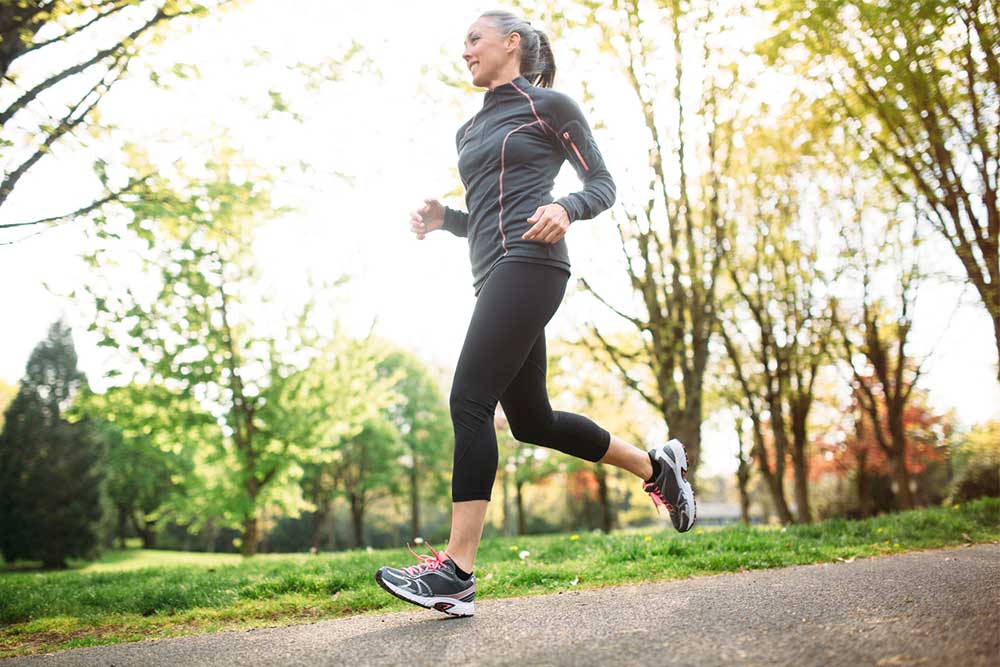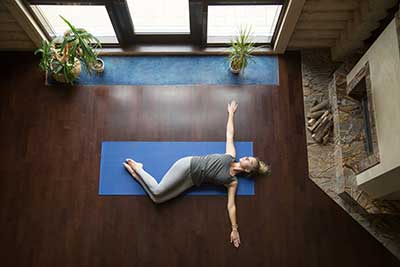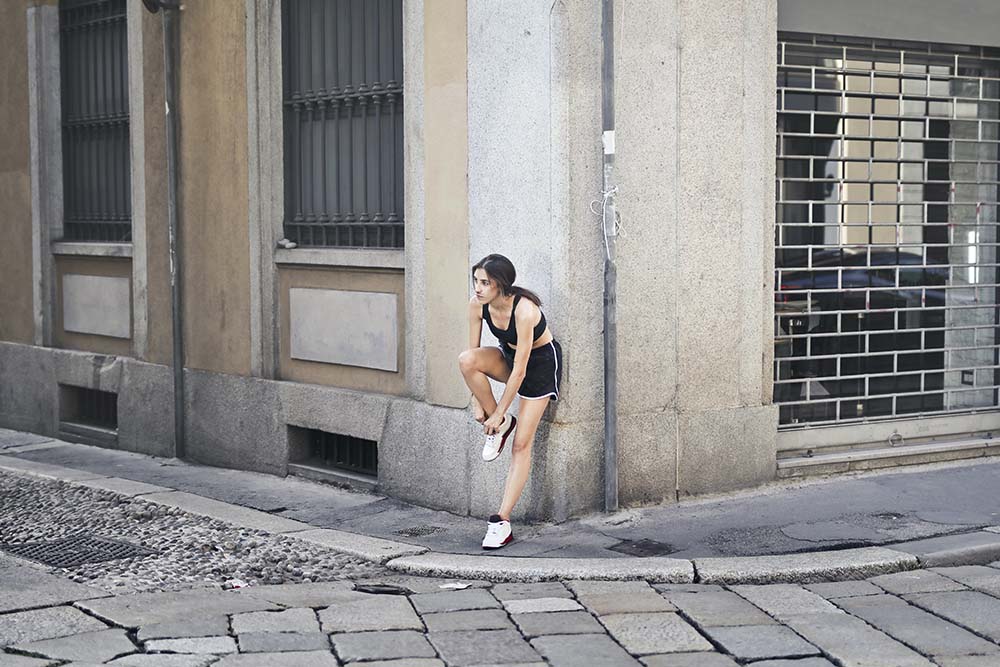Three Types of Exercise for Reducing Anxiety

Most of us have experienced anxiety at one time or another. Whether it be jitters about starting a new job, increased heart rate before a big presentation or exam, or general uneasiness and nerves when the clock strikes 5 pm on a Sunday and the weekend comes to a close. While these everyday instances of anxiety are quite common, so too are clinical diagnoses related to anxiety. According to Dialogues in Clinical Neuroscience, 33.7% of the US population is affected by an anxiety disorder during his or her lifetime. Clinical anxieties include, but are not limited to, generalized anxiety disorder (GAD), social anxiety, separation anxiety, agoraphobia and specific phobias.
How is anxiety treated? Depending on the severity of the diagnosis, anxiety may be treated with pharmacological and therapeutic interventions or a combination of the two. How can we kick anxiety in the short term, though? That is, when the anxious feeling strikes, what can be done to quell the nerves and reset? Research suggests that various types of exercise may be effective in reducing symptoms of anxiety. In this article, I will share research on how three types of exercise help reduce symptoms of anxiety.
Continuous Aerobic Exercise:
Research: Research in the Psychology of Sport and Exercise Journal examined the effect of an acute exercise bout on anxiety, worry, and fatigue. The sample of young women engaged in either 30- minutes of treadmill running or a seated rest control. Measures of anxiety and worry were obtained pre and post the respective interventions.
Outcome: Compared to the seated control group, those in the running condition experienced significant decreases in worry, worry engagement, state anxiety, and feelings of fatigue and increases in energy. The quiet rest condition significantly reduced energy and increased feelings of fatigue with no significant changes found for worry, worry engagement, anxiety, or absence of worry.
Research: Another study examined the difference between moderate continuous exercise and high-intensity exercise when it came to reducing symptoms of depression. In addition to measuring the effects of exercise on feelings of anxiety and worry, they were also interested in measuring the presence of two key pro-inflammatory cytokines, interleukin-6 (IL-6) and TNF-α.
During a 6-week intervention, participants completed 18 exercise sessions that were either moderate or high in intensity. The moderate exercise included a steady state cycle ergometer workout lasting 27.5 minutes. Participants were instructed to be at moderate intensity with a perceived exertion of about 11 (based on the Borg RPE scale ranging from 6-20). The high-intensity group engaged in 60 seconds of high intensity followed by 60 seconds of active recovery. They were instructed to maintain an RPE of about 15 (out of a possible 20).

Outcome: Both the moderate continuous and high-intensity workouts resulted in significant decreases in symptoms of depression. Interestingly, the moderate workout was associated with lower levels of inflammatory cytokines whereas the high-intensity workout was associated with elevated levels of pro-inflammatory cytokines. Elevated levels of pro-inflammatory cytokines are an indicator of greater stress on the body.
Conclusion: This research suggests that a bout of moderate or high-intensity exercise may be effective at reducing symptoms of anxiety, worry, and depression. High-intensity workouts tend to put greater stress on the body, however.
Example: 25 – 40 minutes of moderate intensity running, dancing, & cycling.
Related Article: Rise and Grind: Why you Should Consider Morning HIIT Workouts
Resistance Training
Research: While there is a wealth of research on aerobic exercise outcomes, less is known about resistance training. As such, there is a growing interest surrounding the impact of resistance/weight lifting type training on emotional measures such as anxiety. Researchers aimed to understand the ways in which resistance and aerobic exercise training impacted symptoms of anxiety and worry.
 The resistance exercisers did 10 reps of 3 weighted leg exercises. At the first visit, the intensity was set at 50% of the participant’s one-rep maximum and increased by 5% at each subsequent session. Participants in the aerobic condition exercised for 16 minutes on a cycle ergometer and the intensity was set and increased at comparable intervals to that of the resistance condition. The program lasted 6 weeks and included 2 sessions per week. A wait list group was used as a control.
The resistance exercisers did 10 reps of 3 weighted leg exercises. At the first visit, the intensity was set at 50% of the participant’s one-rep maximum and increased by 5% at each subsequent session. Participants in the aerobic condition exercised for 16 minutes on a cycle ergometer and the intensity was set and increased at comparable intervals to that of the resistance condition. The program lasted 6 weeks and included 2 sessions per week. A wait list group was used as a control.
Outcome: Both aerobic and resistance exercise training resulted in decreased symptoms of generalized anxiety. Resistance training, in particular, resulted in improvements in anxiety – tension as well as improvements in frequency and intensity of irritability.
Conclusion: Resistance training may be a comparable exercise solution when it comes to reducing symptoms of anxiety. If aerobic exercise is not appealing in a moment of anxiety, consider lifting some weights!
Example: While the study mentioned utilized leg exercises, resistance training can also be done with one upper body, chest, back, abdominals etc. Grab some dumbbells that challenge you and do 10 reps of 3 exercises such as squats, lunges, bench presses, & bicep curls.
Related article: Don’t Resist Resistance Training
Low Intensity / Mindfulness Exercise
Research: Aerobic exercise and weight lifting is not everyone’s cup of tea. Fortunately, there is research demonstrating how lower intensity exercises can contribute to the relief of anxiety, depression, and stress. College students were assigned to one of three groups: yoga, mindfulness, or control. The yoga group did traditional Hatha yoga for 75 minutes per week and the mindfulness group learned and practiced various meditative and mindfulness techniques for 75 minutes per week. The intervention lasted 8-weeks.
Outcome: Both the yoga and mindfulness groups demonstrated significant improvements in measures of anxiety, depression, and worry. Only the mindfulness group showed significant improvements in self-compassion.
Conclusions: Both yoga and mindfulness meditation may provide relief from stress, anxiety, and depressive symptoms.
Examples: Yoga & meditative practices.
Related Article: Everyday Tips to be More Mindful
The Takeaway:
If you are experiencing anxiety, there is an exercise that can help. Depending on your mood or preference, research suggests that there are various types of exercise that can help you reduce feelings of anxiety and depression. The next time you are feeling anxious and are tempted to lay on the couch, consider lacing up your sneakers or rolling out your yoga mat instead.
How Overtraining and Undertraining Impacts Hormonal Health
While maintaining a healthy hormonal balance is essential for overall health and wellbeing, it is an often-overlooked component of women’s health. Hormones play a vital role in regulating various bodily functions, including metabolism, energy, mood,...Can Athletes Benefit from More Mitochondria?
Over the last couple of years, the term “mitochondria” has become a bit of a buzzword in the health and fitness community – but what are they, and how do they impact your health and...Exercising in Poor Air Quality: What You Need to Know
For as long as I can remember, people have been exercising outside. Whether it is going for a run, taking a nice long bike ride, or even doing tai chi in the park – the...Ways to Improve Your Longevity Genes
Humans are currently living longer than ever before. With advancements in healthcare, technology, and knowledge, we have begun to work out what it takes to maintain health across the lifespan, thus enhancing longevity in the...Why people in “Blue Zones” Live longer
It is estimate that between 20 and 25% of your longevity is dictated by your genes – which means that more than 75% is dictated entirely by your lifestyle factors. And while research has given...Does Obesity Increase Your Risk of Coronavirus?
We are currently living in a pretty interesting time. Inundated with bad news stories on every channel, isolated from the outside world with no real social interaction, and completely unable to get the gym and...References
Bandelow, B., Michaelis, S. (2015). Epidemiology of anxiety disorders in the 21st century. Dialogues in Clinical Neuroscience, 17(3), 321-335.
Falsafi, N. (2016). A randomized controlled trial of mindfulness versus yoga: effects on depression and /or anxiety in college students. Journal of the American Psychiatric Nurses Association, 22(6), 483-497.
Herring, M.P., Hallgren, M., and Campbell, M.J. (2017). Acute exercise effects on worry, state anxiety, and feelings of energy and fatigue among young women with probable Generalized Anxiety Disorder: A pilot study. Psychology of Sport and Exercise, 33, 31-36.
Herring, M.P., Jacob, M.L., Suveg, C., and O’Connor, P.J. (2011). Effects of short-term exercise training on signs and symptoms of generalized anxiety disorder. Mental Health and Physical Activity,4(2), 71-77.
Paolucci, E.M., Loukov, D., Bowdish, D.M.E., and Heisz, J.J. (2018). Exercise reduced depression and inflammation but intensity matters. Biological Psychology, 133, 79-84
















